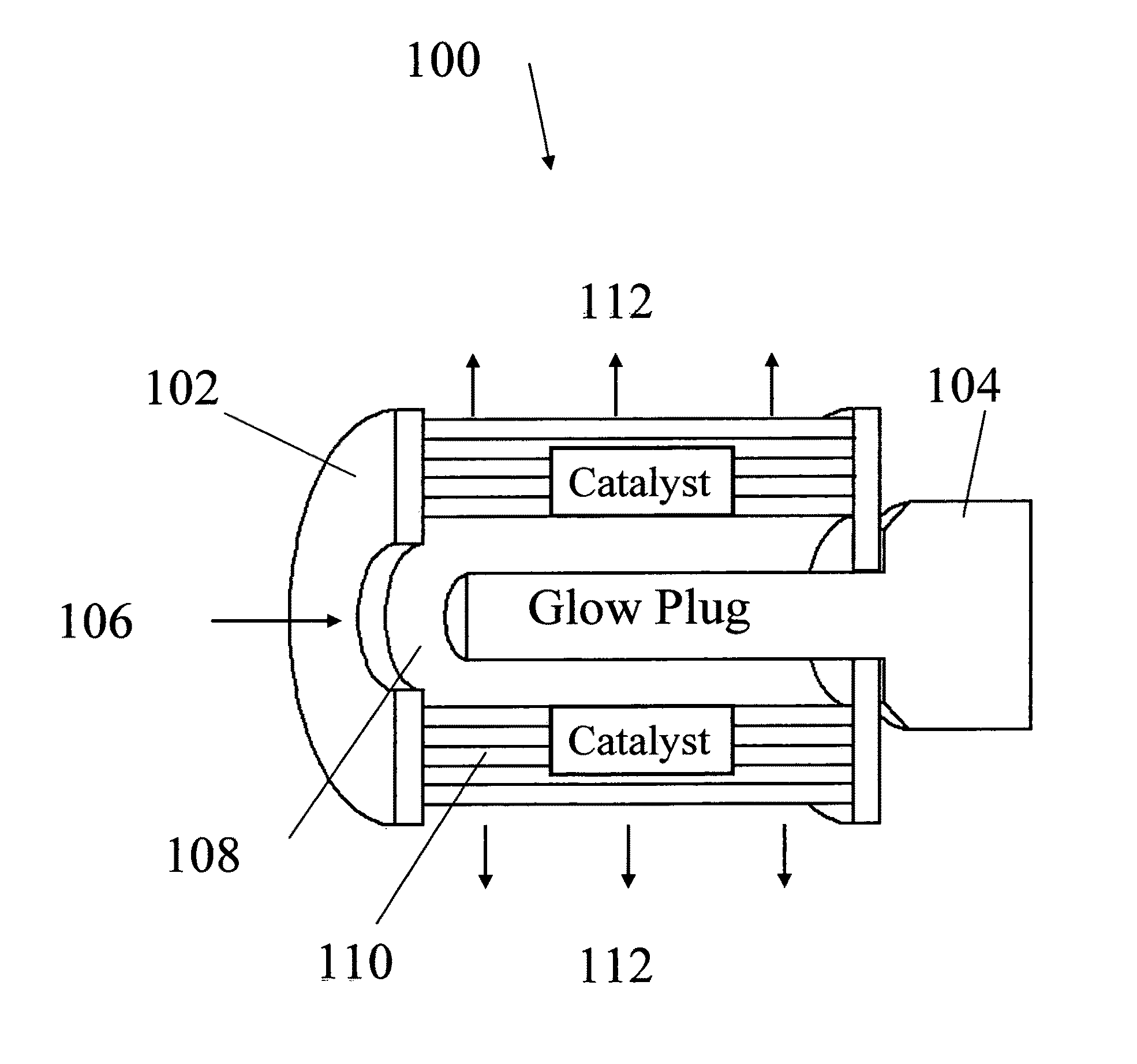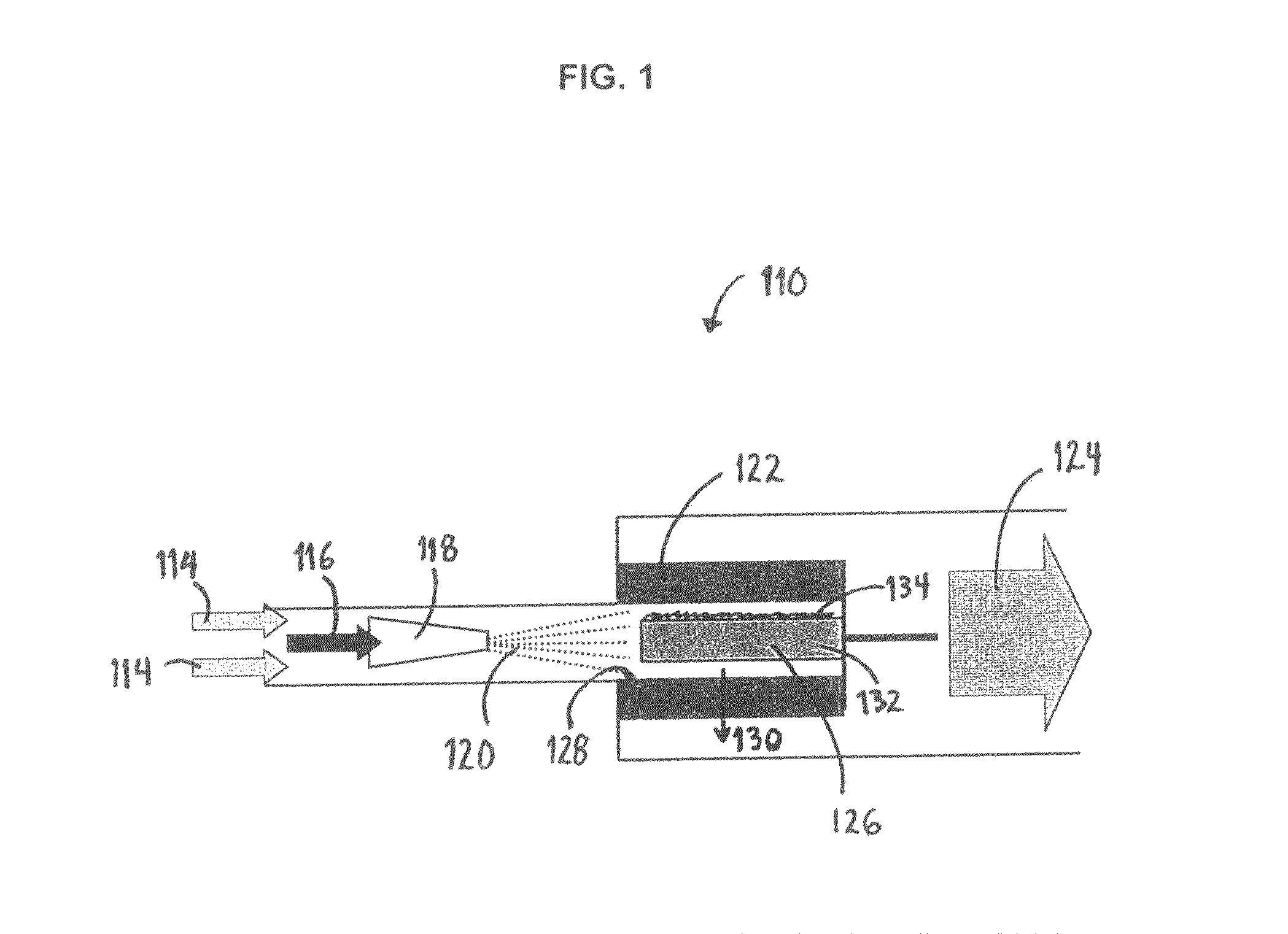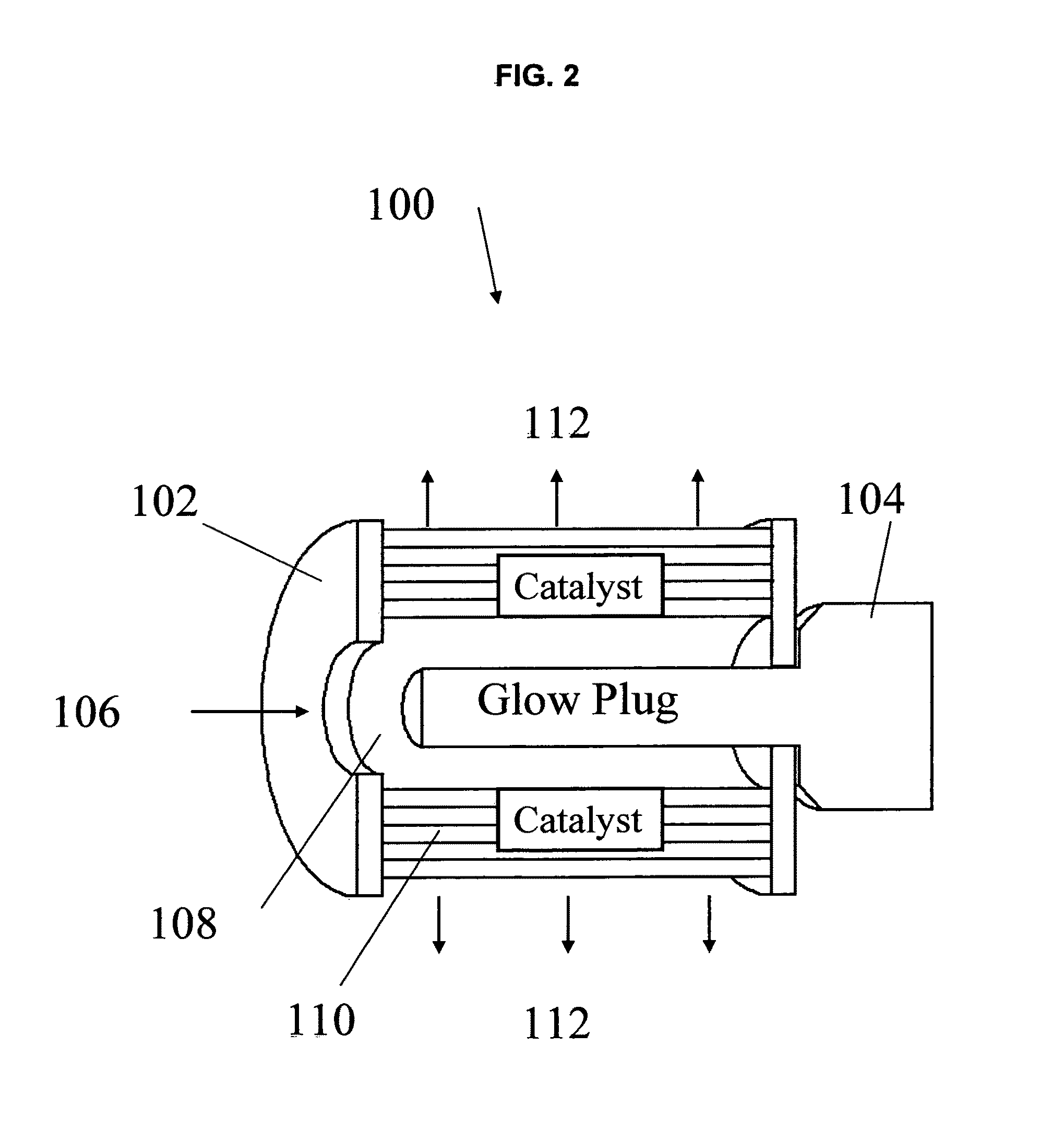Apparatus for vaporizing and reforming liquid fuels
a liquid fuel and apparatus technology, applied in the field of gasification systems, can solve the problems of limited vaporization rate, difficult to achieve coke formation, etc., to achieve the effect of reducing the predisposition to coke, facilitating fuel injection, and facilitating mixing
- Summary
- Abstract
- Description
- Claims
- Application Information
AI Technical Summary
Benefits of technology
Problems solved by technology
Method used
Image
Examples
Embodiment Construction
[0030]This application is a continuation-in-part of U.S. patent application Ser. No. 11 / 974,988, filed Oct. 16, 2007, which is a continuation in part of U.S. patent application Ser. No. 10 / 902,512, filed Jul. 29, 2004, now abandoned, which claims the benefit of U.S. Provisional Application No. 60 / 491,604, filed Jul. 31, 2003. The aforementioned patent applications are incorporated by reference in their entirety into this description.
[0031]The fuel supplied to the apparatus and process of this invention comprises any liquid fuel, for example, obtained from a petroleum, biomass, or synthetic source. The fuel is typically a liquid at about 21° C. and 1 atmosphere pressure; and preferably, has a normal boiling point in a range from about 200° C. to about 400° C. Generally, the fuel comprises a mixture of paraffinic, cycloaliphatic, and aromatic hydrocarbons. Suitable fuels include without limitation, diesel, kerosene, and jet propulsion fuels, such as JP-8, JP-5, and Jet A, as well as s...
PUM
 Login to View More
Login to View More Abstract
Description
Claims
Application Information
 Login to View More
Login to View More - R&D
- Intellectual Property
- Life Sciences
- Materials
- Tech Scout
- Unparalleled Data Quality
- Higher Quality Content
- 60% Fewer Hallucinations
Browse by: Latest US Patents, China's latest patents, Technical Efficacy Thesaurus, Application Domain, Technology Topic, Popular Technical Reports.
© 2025 PatSnap. All rights reserved.Legal|Privacy policy|Modern Slavery Act Transparency Statement|Sitemap|About US| Contact US: help@patsnap.com



